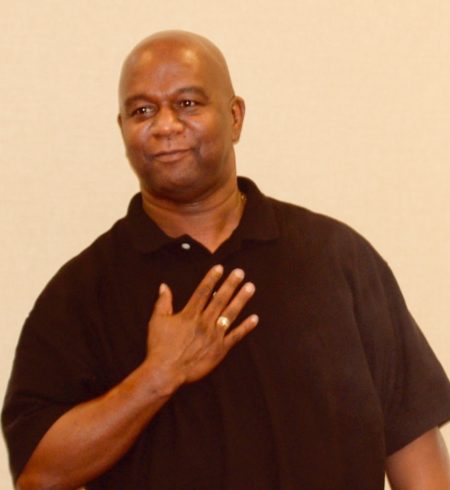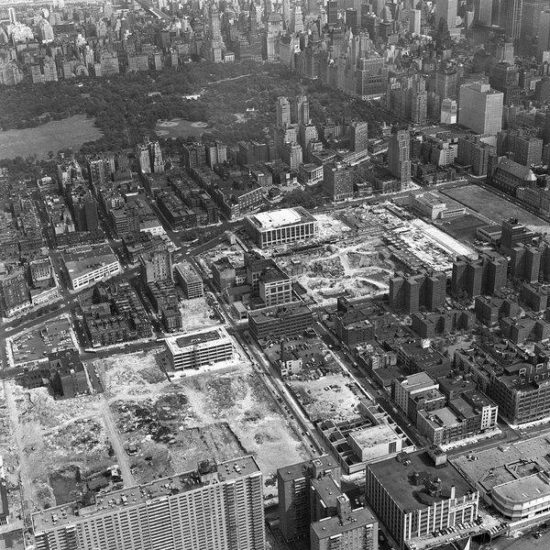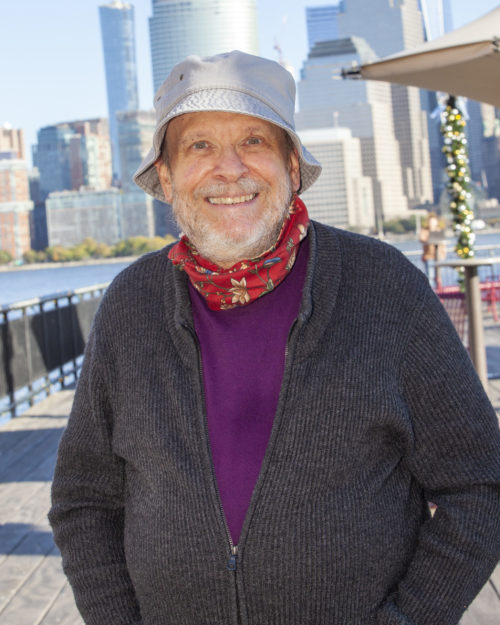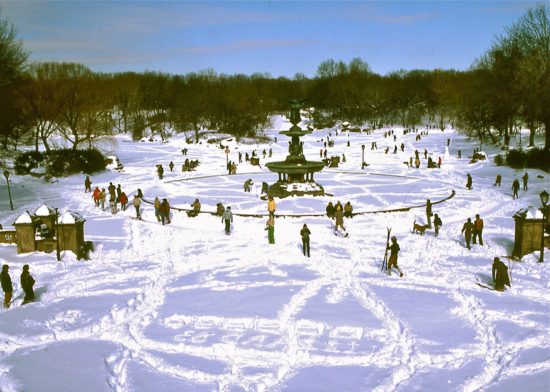
By Alton Johnson
I grew up in the Amsterdam Houses in Manhattan, NYC. They were and are low-income NYCHA housing built in 1947. My family moved there in 1950 and we remained there until 1967. Up until 1964, when the drugs (heroin) arrived, it was a great place to live. The projects were bordered by Amsterdam Avenue and West End Avenue and 64th Street and 61st Street. Across Amsterdam were tenement houses populated by white, black and latin families.
In the late 1950s, they began Lincoln Center by tearing down the buildings directly across from the projects. I had a bird’s eye view because my bedroom and living room windows faced Amsterdam Ave. The teardown was pretty swift and at the time I had no idea where the people who lived there would be going. Some of my friends lived there and then they were gone. As I understand today, some were moved to other housing in the city, some moved elsewhere on their own, and some were finally paid to leave. Once everyone was gone and the buildings were demolished, several square blocks had been leveled and construction of the first building began. The area was fenced off and the work continued.

During construction, my friends and I took advantage of the situation and would play ring-o-lario on the construction site. Others call it ring-a-levio, but not in my projects. There were security guards working there who would chase us on occasion, but that was part of the fun. Ring-o-lario, by the way, was a game consisting of two teams. The teams would hide and one group would try to capture the other. Once captured, you were put on the agreed-upon base. The base could be raided and those captured could be set free. There was absolutely no violence associated with this game, and, at the time, it was comparable to Game of Thrones. Each game could last up to a week, depending on the size of the teams. Nothing at the time was more fun.
As we got older and the first building of Lincoln Center was completed, the games changed and the feeling in the projects changed, too. The games changed to basketball, stick ball, punch ball, hockey on roller skates, and softball and hardball at the newly constructed PS 191 on 61st Street and Amsterdam.
There were other areas cleared surrounding the projects on pretty much all sides, and the chatter in the projects was that the Amsterdam Houses would also be demolished to make way for new bigger and better things. That has still not happened. Once all the new construction was complete, there stood Lincoln Center in all its glory, with new housing, schools and subway stops (66th Street) bordering it. But right behind, in the middle of all this newness, still stand the Amsterdam Houses.
Alton Johnson can be reached through WSR at westsiderag@gmail.com









I loved reading this. Thanks!
Thank you…
Fascinating. Thanks for this recollection
Great photo. I can mentally picture the buildings that are there now. (from the ground) I’d love to get a copy of it.
It is an open-source photo. Here is the link
https://commons.wikimedia.org/wiki/File:San-juan-hill-demolition-1962.jpg
What a fascinating time. I love stories like this and the redevelopment of that area in particular is interesting. Only, I want to see more photos if you have them.
Thank for this personal and city history, and that amazing (to us newer or the area) photo from 1962. Your great vivid descriptions made a kids eye view of the neighborhood come alive. PS 191 is such a sweet school, in size and layout from another time – though it has had many ups and downs in recent decades, it is nice to hear this context. (The Ailey company must have starting working down the hill from there in those years in the old huge warehouse space too.)
Attended ps 191 from second to fourth grade. Back then the school was great. Later their evening community center was awesome. Gym and ping pong in the schools dining room. Thanks for your comment.
It is saddening, too, to hear this story reflecting the brutal process we also know about from urban historians- that a stable sounding lower income black and brown neighborhood was targeted for what was then called “slum clearance” in the “urban renewal” language of the time – and all this destruction was planned and started well before in your recollection the heroin and “needle park” era. The many many floors of profitable real estate that then slowly, then faster, filled the emptied blocks in the photo for four decades tell the rest of the story. Amsterdam houses are among the few affordable rentals left.
Did we even read the same article? How was the neighborhood black and brown? He literally wrote about how it was lower income and racially mixed. First paragraph of the article.
Building Lincoln Center decimated affordable housing in the area, though there are still pockets of it in the west 50s west of 9th avenue. Even west of 8th.
Meanwhile. The cross bronx expressway decimated the stable lower middle class in the Bronx. I don’t think it has recovered.
And I have never read anything about projects targeting “black and brown neighborhoods.” What I HAVE read is that they were in poorer neighborhoods, and due to housing discrimination, working class white people could move out, but the Black and Hispanic/latino families of the same economic means could not.
The neighborhood that Alton Johnson looked out over from his window was called San Juan Hill, and was a historic predominantly Black district in NYC that was wiped out. It was the main Black district prior to Harlem. It was possibly named after Black Spanish American War veterans who settled there.
Yes, as of the 40s the neighborhood was primarily inhabited by African Americans, and as of the 50s Puerto Ricans were moving in in significant numbers.
The ability to conflate a minority neighborhood with a “slum” made it easy to tear down this area, as opposed to working class white neighborhoods like Hells Kitchen.
The urban renewal tract stretched from Columbus Circle to 70th Street and included the Coliseum, the Fordham Campus, Lincoln Center and Lincoln Towers.
By the way, you can catch glimpses of the southern part of the neighborhood in the film “It Should Happen To You,” a great Judy Holliday vehicle.
We should all protest this, and never go to Lincoln Center.
I agree
Thank you Mr. Johnson for sharing this! Beautifully told.
You are very welcome. Recollections of my youth. Thanks again.
Here’s just one story of someone who did have to leave the neighborhood…My father grew upon W61st St between 9th & Amsterdam. My grandmother (who was born in the west 50’s in 1900) did not want to leave her apartment, as the story goes in our family “they tore the building down around her”. She moved to Long Island, near the rest of us but never loved it. She still returned to the neighborhood to go to her doctor, her church and eventually died at “Roosevelt” hospital.
I and others heard that story at the time but we could not verify it. The rumor was they began using the wrecking ball with people still in the building to force them out. Thank you for verifying that long lasting rumor.
Of course, West Side Story was based on the destruction of the housing on the site where Lincoln Center now stands.
My friends and I watched some of the filming of West Side Story on 67 and 68 st between Amsterdam and West End Avenues.
Thanks Mr. Johnson for a nice recollection. But I think people don’t recall what a nasty area that had become. I don’t regret for a moment the building of Lincoln Center and how it has totally changed the Upper West Side.
Thank you for the very interesting story!There’s a view of the area from a Lincoln Towers terrace in the movie “ The Pawnbroker.”
The game Alton played as a kid was called ring-o-levio in my Jewish neighborhood in the Bronx, and ring-o-leario in Irish neighborhoods throughout the city. I’ve met people from other parts of the country who called the same game ring-o-lario.
thanks for your post. Whatever the game was called it was truly a great game.
Thank you for this. I remember when the buildings went up, along with the story that “Lincoln Center is a great development that will benefit all” New Yorkers, visitors, etc. It is only in recent years that articles about how the San Juan Hill area was cleared–the disadvantaged people who lost their homes, and whom the City did not treat well in their relocation efforts–have begun to appear. Yes, Lincoln Center is great, but it’s another example of how the city did not pay attention to the displaced.
“…until the drugs arrived.” What a chilling phrase. Good to hear the truth from someone who lived there, mostly in the good times. Thank you, Mr. Johnson.
My next post will cover the bad times.Thanks for commenting.
Hi Alton, thanks for your article. It brought back many memories. You and I probably crossed paths as I grew up in Amsterdam Houses in the 50s and early 60’s. It was a wonderful crossroads of humanity. We were white working class and my classmates and friends were Irish, Italian, Chinese, Latino and African American. I went to Catholic school, St. Paul’s, and remember looking out the window to see Eisenhower cut the ribbon to begin the construction of Lincoln Center. Many of my friends were relocated out of the neighborhood. It was a pretty safe place for kids in those days. I also remember a kid named Lew Alcindor (Karim Abdul-Jabbar) playing basketball for Power Memorial High School across the street from the projects. Very sorry to see it fall apart.
I grew up in 90. I remember Alcindor also. He towered over the fence surrounding the construction site. Saw him everyday on my way to school. Many of my friends went to St. Paul.Those were good days. Also saw Eisenhower in a motorcade passing PS 191.